Two-dimensional quantum materials provide a unique platform for new quantum technologies, because they offer the flexibility of combining…
Using AI to enhance satellite imagery to monitor our planet – Technology Org
A new method to assess different satellite designs using a powerful AI technique to monitor our planet from space…
Bio-inspired neuroprosthetics: sending signals the brain can understand – Technology Org
Prostheses that connect to the nervous system have been available for several years. Now, researchers at ETH Zurich…
A sustainable fuel and chemical from the robotic lab – Technology Org
Artificial intelligence and automated laboratory infrastructure are massively accelerating the development of new chemical catalysts. With these tools,…
Hackers steal faces to create deepfakes and empty bank accounts

EXECUTIVE SUMMARY:
A new form of mobile malware is designed to harvest personal information, including facial biometric data, which hackers then process for the purpose of generating deepfakes. Once the deepfakes are deployed, they deceive electronic security systems, allowing hackers to break into bank accounts and disappear with the funds.
The hackers are also impersonating local bank representatives and government organizations, as this multi-part malware scheme relies on the provisioning of select verbal commands. One early victim of the scheme lost approximately $40,000, according to police.
Biometric data theft
Known as GoldPickaxe, the malware is disguised as one of roughly two dozen apps. The malware can steal photos stored on a device, request information from users during a supposed app onboarding process, and prompt people to photograph both sides of an official identity card, which allows the app to gather profile pictures. All data is then sent to an attacker-controlled cloud bucket.
Cyber security researchers believe that the Chinese-speaking threat actor group called GoldFactory is likely responsible for the malware. The group is also known for the creation of GoldDigger, GoldDiggerPlus and GoldKefu — all banking trojans.
“The gang has well-defined processes and operational maturity and constantly enhances its tool set to align with the targeted environment, showing a high proficiency in malware development,” says malware analyst Andrey Polovinkin.
Asia-Pacific risk
At present, GoldFactory predominately targets people in the Asia-Pacific region. Police have identified victims in Vietnam and Thailand.
In March of 2023, Thailand’s central bank ordered banks around the nation to comply with new mobile banking security requirements. This involves the use of biometric authentication whenever someone attempts to open a new bank account or attempts to facilitate digital financial transfers of more than 50,000 bhat. GoldPickaxe emerged three months after these security measures were implemented, seemingly in an effort to circumvent them.
Given the ubiquity of facial recognition as an access and security feature across banks, both in Asia and elsewhere, the malware threatens to become a global menace. GoldPickaxe-like malware could be adopted by other threat groups and/or incorporated into existing malware strains.
|
GoldPickaxe is available for both Android and iOS, which is extremely rare. In general, Apple iOS blocks the installation of unapproved apps. In this case, attackers attempt to socially engineer victims into installing the malware — either via Apple’s online TestFlight service (for app beta-testing) or by allowing a device to be enrolled in an attacker-controlled mobile device management program. |
Why this malware is effective
This malware is effective for two reasons: The first is that deepfake technology is now more sophisticated, it’s “smarter,” than biometric authentication mechanisms.
Facial recognition systems that don’t use 3D data are relatively easy to bypass using images.
The second is that the vast majority of security professionals, product developers and the general public lack awareness of the fact that deepfakes can fool biometrics-based systems.
Further thoughts
This malware remains in an active stage of evolution. Ensure that you and your organization stay up-to-date regarding the latest cyber threats. Subscribe to the CyberTalk.org newsletter here.
Lastly, for more threat intelligence insights, please download Check Point’s 2024 Security Report.
Study determines the original orientations of rocks drilled on Mars
As it trundles around an ancient lakebed on Mars, NASA’s Perseverance rover is assembling a one-of-a-kind rock collection. The car-sized explorer is methodically drilling into the Red Planet’s surface and pulling out cores of bedrock that it’s storing in sturdy titanium tubes. Scientists hope to one day return the tubes to Earth and analyze their contents for traces of embedded microbial life.
Since it touched down on the surface of Mars in 2021, the rover has filled 20 of its 43 tubes with cores of bedrock. Now, MIT geologists have remotely determined a crucial property of the rocks collected to date, which will help scientists answer key questions about the planet’s past.
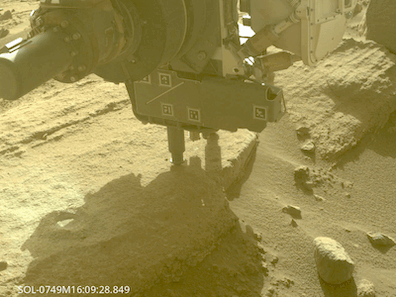
Image: NASA/JPL-Caltech/ASU/MSSS
In a study appearing today in the journal Earth and Space Science, an MIT team reports that they have determined the original orientation of most bedrock samples collected by the rover to date. By using the rover’s own engineering data, such as the positioning of the vehicle and its drill, the scientists could estimate the orientation of each sample of bedrock before it was drilled out from the Martian ground.
The results represent the first time scientists have oriented samples of bedrock on another planet. The team’s method can be applied to future samples that the rover collects as it expands its exploration outside the ancient basin. Piecing together the orientations of multiple rocks at various locations can then give scientists clues to the conditions on Mars in which the rocks originally formed.
“There are so many science questions that rely on being able to know the orientation of the samples we’re bringing back from Mars,” says study author Elias Mansbach, a graduate student in MIT’s Department of Earth, Atmospheric and Planetary Sciences.
“The orientation of rocks can tell you something about any magnetic field that may have existed on the planet,” adds Benjamin Weiss, professor of planetary sciences at MIT. “You can also study how water and lava flowed on the planet, the direction of the ancient wind, and tectonic processes, like what was uplifted and what sunk. So it’s a dream to be able to orient bedrock on another planet, because it’s going to open up so many scientific investigations.”
Weiss and Mansbach’s co-authors are Tanja Bosak and Jennifer Fentress at MIT, along with collaborators at multiple institutions including the Jet Propulsion Laboratory at Caltech.
Profound shift
The Perseverance rover, nicknamed “Percy,” is exploring the floor of Jezero Crater, a large impact crater layered with igneous rocks, which may have been deposited from past volcanic eruptions, as well as sedimentary rocks that likely formed from long-dried-out rivers that fed into the basin.

Image: NASA/JPL-Caltech/ASU/MSSS
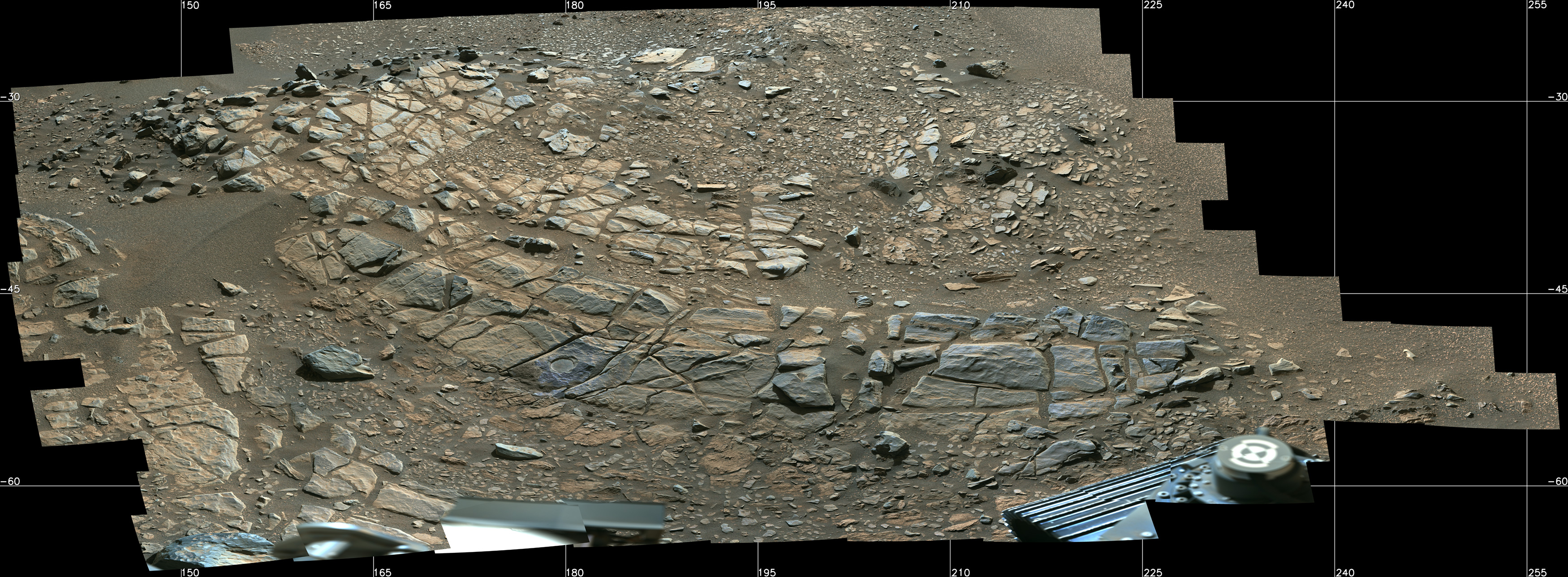
Image: NASA/JPL-Caltech/ASU/MSSS
“Mars was once warm and wet, and there’s a possibility there was life there at one time,” Weiss says. “It’s now cold and dry, and something profound must have happened on the planet.”
Many scientists, including Weiss, suspect that Mars, like Earth, once harbored a magnetic field that shielded the planet from the sun’s solar wind. Conditions then may have been favorable for water and life, at least for a time.
“Once that magnetic field went away, the sun’s solar wind — this plasma that boils off the sun and moves faster than the speed of sound — just slammed into Mars’ atmosphere and may have removed it over billions of years,” Weiss says. “We want to know what happened, and why.”
The rocks beneath the Martian surface likely hold a record of the planet’s ancient magnetic field. When rocks first form on a planet’s surface, the direction of their magnetic minerals is set by the surrounding magnetic field. The orientation of rocks can thus help to retrace the direction and intensity of the planet’s magnetic field and how it changed over time.
Since the Perseverance rover was collecting samples of bedrock, along with surface soil and air, as part of its exploratory mission, Weiss, who is a member of the rover’s science team, and Mansbach looked for ways to determine the original orientation of the rover’s bedrock samples as a first step toward reconstructing Mars’ magnetic history.
“It was an amazing opportunity, but initially there was no mission requirement to orient bedrock,” Mansbach notes.
Roll with it
Over several months, Mansbach and Weiss met with NASA engineers to hash out a plan for how to estimate the original orientation of each sample of bedrock before it was drilled out of the ground. The problem was a bit like predicting what direction a small circle of sheetcake is pointing, before twisting a round cookie cutter in to pull out a piece. Similarly, to sample bedrock, Perseverance corkscrews a tube-shaped drill into the ground at a perpendicular angle, then pulls the drill directly back out, along with any rock that it penetrates.
To estimate the orientation of the rock before it was drilled out of the ground, the team realized they need to measure three angles, the hade, azimuth, and roll, which are similar to the pitch, yaw, and roll of a boat. The hade is essentially the tilt of the sample, while the azimuth is the absolute direction the sample is pointing relative to true north. The roll refers to how much a sample must turn before returning to its original position.
In talking with engineers at NASA, the MIT geologists found that the three angles they required were related to measurements that the rover takes on its own in the course of its normal operations. They realized that to estimate a sample’s hade and azimuth they could use the rover’s measurements of the drill’s orientation, as they could assume the tilt of the drill is parallel to any sample that it extracts.
To estimate a sample’s roll, the team took advantage of one of the rover’s onboard cameras, which snaps an image of the surface where the drill is about to sample. They reasoned that they could use any distinguishing features on the surface image to determine how much the sample would have to turn in order to return to its original orientation.
In cases where the surface bore no distinguishing features, the team used the rover’s onboard laser to make a mark in the rock, in the shape of the letter “L,” before drilling out a sample — a move that was jokingly referred to at the time as the first graffiti on another planet.
By combining all the rover’s positioning, orienting, and imaging data, the team estimated the original orientations of all 20 of the Martian bedrock samples collected so far, with a precision that is comparable to orienting rocks on Earth.
“We know the orientations to within 2.7 degrees uncertainty, which is better than what we can do with rocks in the Earth,” Mansbach says. “We’re working with engineers now to automate this orienting process so that it can be done with other samples in the future.”
“The next phase will be the most exciting,” Weiss says. “The rover will drive outside the crater to get the oldest known rocks on Mars, and it’s an incredible opportunity to be able to orient these rocks, and hopefully uncover a lot of these ancient processes.”
This research was supported, in part, by NASA and the Mars 2020 Participating Scientist program.
Tests show high-temperature superconducting magnets are ready for fusion
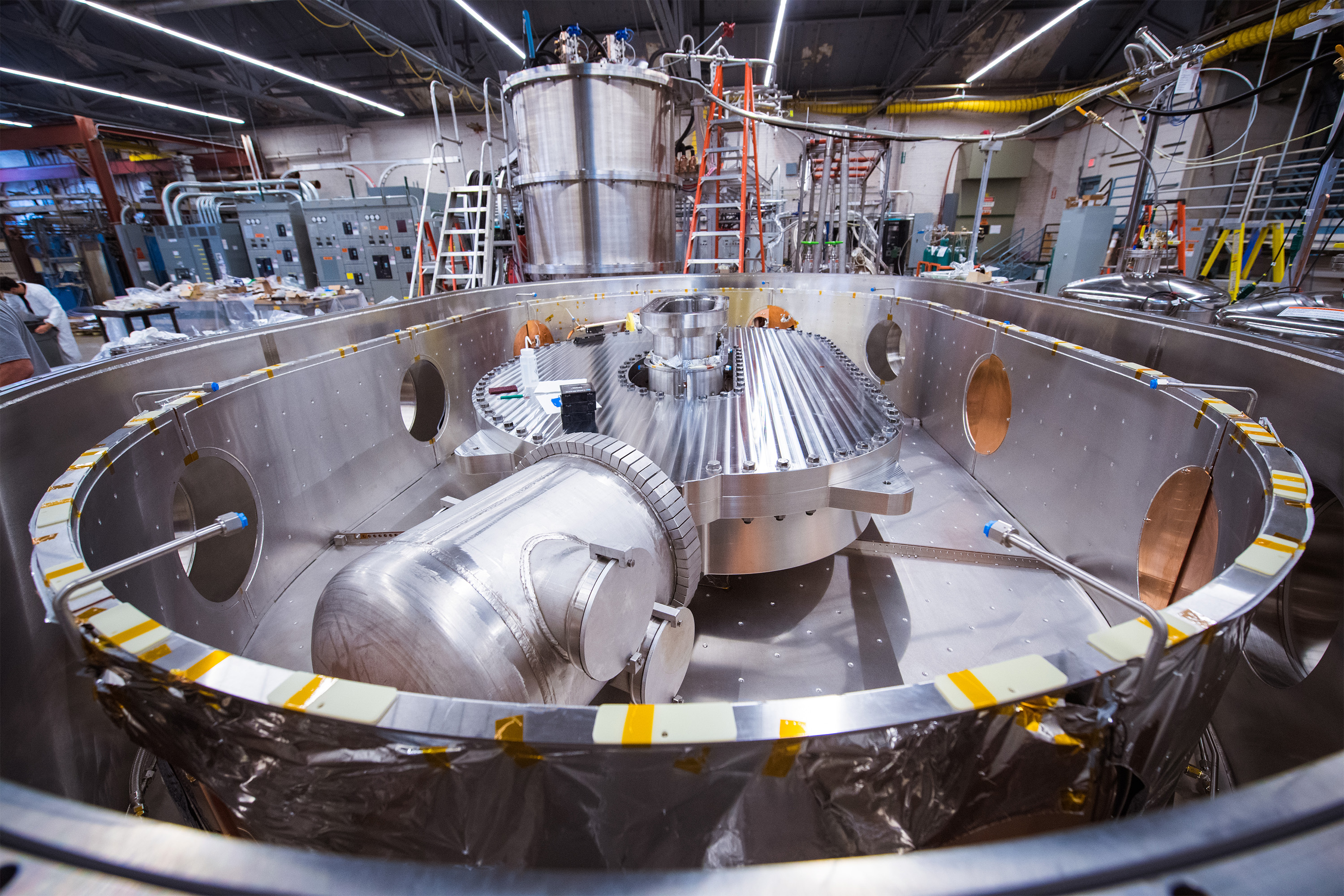
In the predawn hours of Sept. 5, 2021, engineers achieved a major milestone in the labs of MIT’s Plasma Science and Fusion Center (PSFC), when a new type of magnet, made from high-temperature superconducting material, achieved a world-record magnetic field strength of 20 tesla for a large-scale magnet. That’s the intensity needed to build a fusion power plant that is expected to produce a net output of power and potentially usher in an era of virtually limitless power production.
The test was immediately declared a success, having met all the criteria established for the design of the new fusion device, dubbed SPARC, for which the magnets are the key enabling technology. Champagne corks popped as the weary team of experimenters, who had labored long and hard to make the achievement possible, celebrated their accomplishment.
But that was far from the end of the process. Over the ensuing months, the team tore apart and inspected the components of the magnet, pored over and analyzed the data from hundreds of instruments that recorded details of the tests, and performed two additional test runs on the same magnet, ultimately pushing it to its breaking point in order to learn the details of any possible failure modes.
All of this work has now culminated in a detailed report by researchers at PSFC and MIT spinout company Commonwealth Fusion Systems (CFS), published in a collection of six peer-reviewed papers in a special edition of the March issue of IEEE Transactions on Applied Superconductivity. Together, the papers describe the design and fabrication of the magnet and the diagnostic equipment needed to evaluate its performance, as well as the lessons learned from the process. Overall, the team found, the predictions and computer modeling were spot-on, verifying that the magnet’s unique design elements could serve as the foundation for a fusion power plant.
Enabling practical fusion power
The successful test of the magnet, says Hitachi America Professor of Engineering Dennis Whyte, who recently stepped down as director of the PSFC, was “the most important thing, in my opinion, in the last 30 years of fusion research.”
Before the Sept. 5 demonstration, the best-available superconducting magnets were powerful enough to potentially achieve fusion energy — but only at sizes and costs that could never be practical or economically viable. Then, when the tests showed the practicality of such a strong magnet at a greatly reduced size, “overnight, it basically changed the cost per watt of a fusion reactor by a factor of almost 40 in one day,” Whyte says.
“Now fusion has a chance,” Whyte adds. Tokamaks, the most widely used design for experimental fusion devices, “have a chance, in my opinion, of being economical because you’ve got a quantum change in your ability, with the known confinement physics rules, about being able to greatly reduce the size and the cost of objects that would make fusion possible.”
The comprehensive data and analysis from the PSFC’s magnet test, as detailed in the six new papers, has demonstrated that plans for a new generation of fusion devices — the one designed by MIT and CFS, as well as similar designs by other commercial fusion companies — are built on a solid foundation in science.
The superconducting breakthrough
Fusion, the process of combining light atoms to form heavier ones, powers the sun and stars, but harnessing that process on Earth has proved to be a daunting challenge, with decades of hard work and many billions of dollars spent on experimental devices. The long-sought, but never yet achieved, goal is to build a fusion power plant that produces more energy than it consumes. Such a power plant could produce electricity without emitting greenhouse gases during operation, and generating very little radioactive waste. Fusion’s fuel, a form of hydrogen that can be derived from seawater, is virtually limitless.
But to make it work requires compressing the fuel at extraordinarily high temperatures and pressures, and since no known material could withstand such temperatures, the fuel must be held in place by extremely powerful magnetic fields. Producing such strong fields requires superconducting magnets, but all previous fusion magnets have been made with a superconducting material that requires frigid temperatures of about 4 degrees above absolute zero (4 kelvins, or -270 degrees Celsius). In the last few years, a newer material nicknamed REBCO, for rare-earth barium copper oxide, was added to fusion magnets, and allows them to operate at 20 kelvins, a temperature that despite being only 16 kelvins warmer, brings significant advantages in terms of material properties and practical engineering.
Taking advantage of this new higher-temperature superconducting material was not just a matter of substituting it in existing magnet designs. Instead, “it was a rework from the ground up of almost all the principles that you use to build superconducting magnets,” Whyte says. The new REBCO material is “extraordinarily different than the previous generation of superconductors. You’re not just going to adapt and replace, you’re actually going to innovate from the ground up.” The new papers in Transactions on Applied Superconductivity describe the details of that redesign process, now that patent protection is in place.
A key innovation: no insulation
One of the dramatic innovations, which had many others in the field skeptical of its chances of success, was the elimination of insulation around the thin, flat ribbons of superconducting tape that formed the magnet. Like virtually all electrical wires, conventional superconducting magnets are fully protected by insulating material to prevent short-circuits between the wires. But in the new magnet, the tape was left completely bare; the engineers relied on REBCO’s much greater conductivity to keep the current flowing through the material.
“When we started this project, in let’s say 2018, the technology of using high-temperature superconductors to build large-scale high-field magnets was in its infancy,” says Zach Hartwig, the Robert N. Noyce Career Development Professor in the Department of Nuclear Science and Engineering. Hartwig has a co-appointment at the PSFC and is the head of its engineering group, which led the magnet development project. “The state of the art was small benchtop experiments, not really representative of what it takes to build a full-size thing. Our magnet development project started at benchtop scale and ended up at full scale in a short amount of time,” he adds, noting that the team built a 20,000-pound magnet that produced a steady, even magnetic field of just over 20 tesla — far beyond any such field ever produced at large scale.
“The standard way to build these magnets is you would wind the conductor and you have insulation between the windings, and you need insulation to deal with the high voltages that are generated during off-normal events such as a shutdown.” Eliminating the layers of insulation, he says, “has the advantage of being a low-voltage system. It greatly simplifies the fabrication processes and schedule.” It also leaves more room for other elements, such as more cooling or more structure for strength.
The magnet assembly is a slightly smaller-scale version of the ones that will form the donut-shaped chamber of the SPARC fusion device now being built by CFS in Devens, Massachusetts. It consists of 16 plates, called pancakes, each bearing a spiral winding of the superconducting tape on one side and cooling channels for helium gas on the other.
But the no-insulation design was considered risky, and a lot was riding on the test program. “This was the first magnet at any sufficient scale that really probed what is involved in designing and building and testing a magnet with this so-called no-insulation no-twist technology,” Hartwig says. “It was very much a surprise to the community when we announced that it was a no-insulation coil.”
Pushing to the limit … and beyond
The initial test, described in previous papers, proved that the design and manufacturing process not only worked but was highly stable — something that some researchers had doubted. The next two test runs, also performed in late 2021, then pushed the device to the limit by deliberately creating unstable conditions, including a complete shutoff of incoming power that can lead to a catastrophic overheating. Known as quenching, this is considered a worst-case scenario for the operation of such magnets, with the potential to destroy the equipment.
Part of the mission of the test program, Hartwig says, was “to actually go off and intentionally quench a full-scale magnet, so that we can get the critical data at the right scale and the right conditions to advance the science, to validate the design codes, and then to take the magnet apart and see what went wrong, why did it go wrong, and how do we take the next iteration toward fixing that. … It was a very successful test.”
That final test, which ended with the melting of one corner of one of the 16 pancakes, produced a wealth of new information, Hartwig says. For one thing, they had been using several different computational models to design and predict the performance of various aspects of the magnet’s performance, and for the most part, the models agreed in their overall predictions and were well-validated by the series of tests and real-world measurements. But in predicting the effect of the quench, the model predictions diverged, so it was necessary to get the experimental data to evaluate the models’ validity.
“The highest-fidelity models that we had predicted almost exactly how the magnet would warm up, to what degree it would warm up as it started to quench, and where would the resulting damage to the magnet would be,” he says. As described in detail in one of the new reports, “That test actually told us exactly the physics that was going on, and it told us which models were useful going forward and which to leave by the wayside because they’re not right.”
Whyte says, “Basically we did the worst thing possible to a coil, on purpose, after we had tested all other aspects of the coil performance. And we found that most of the coil survived with no damage,” while one isolated area sustained some melting. “It’s like a few percent of the volume of the coil that got damaged.” And that led to revisions in the design that are expected to prevent such damage in the actual fusion device magnets, even under the most extreme conditions.
Hartwig emphasizes that a major reason the team was able to accomplish such a radical new record-setting magnet design, and get it right the very first time and on a breakneck schedule, was thanks to the deep level of knowledge, expertise, and equipment accumulated over decades of operation of the Alcator C-Mod tokamak, the Francis Bitter Magnet Laboratory, and other work carried out at PSFC. “This goes to the heart of the institutional capabilities of a place like this,” he says. “We had the capability, the infrastructure, and the space and the people to do these things under one roof.”
The collaboration with CFS was also key, he says, with MIT and CFS combining the most powerful aspects of an academic institution and private company to do things together that neither could have done on their own. “For example, one of the major contributions from CFS was leveraging the power of a private company to establish and scale up a supply chain at an unprecedented level and timeline for the most critical material in the project: 300 kilometers (186 miles) of high-temperature superconductor, which was procured with rigorous quality control in under a year, and integrated on schedule into the magnet.”
The integration of the two teams, those from MIT and those from CFS, also was crucial to the success, he says. “We thought of ourselves as one team, and that made it possible to do what we did.”
Could We Achieve AGI Within 5 Years? NVIDIA’s CEO Jensen Huang Believes It’s Possible
In the dynamic field of artificial intelligence, the quest for Artificial General Intelligence (AGI) represents a pinnacle of innovation, promising to redefine the interplay between technology and human intellect. Jensen Huang, CEO of NVIDIA, a trailblazer in AI technology, recently brought this topic to the forefront…
Sony Testing PC Support For PlayStation VR2
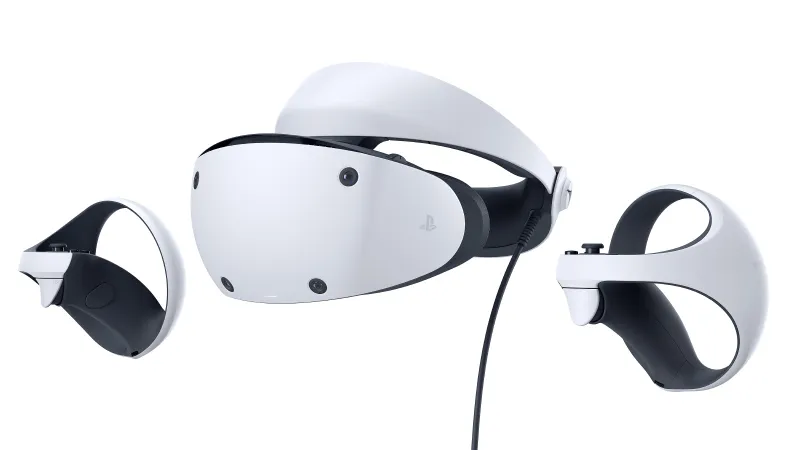
PlayStation VR2 launched in February of last year and while its debut featured new first-party titles like Horizon Call of the Mountain, our favorites on the new platform featured previously released titles like Resident Evil Village. Since that launch, support for the platform has been sparse, to say the least, especially from PlayStation itself. However, Sony has revealed it is currently testing PC support for PS VR2, with hopes to make that support available this year.
“[We’re] pleased to share that we are currently testing the ability for PS VR2 players to access additional games on PC to offer even more game variety in addition to the PS VR2 titles available through PS5,” a new PlayStation Blog post published today reads. “We hope to make this support available in 2024, so stay tuned for more updates.”
[embedded content]
The rest of the blog goes on to detail new and upcoming titles coming to PS VR2, but those are going to be playable with PlayStation 5 consoles. However, it sounds like PC support, which could open up a flood gate for new VR content, might arrive later this year.
For more about the hardware, read Game Informer’s PS VR2 review, and then read Game Informer’s Horizon Call of the Mountain review. After that, read about why Resident Evil Village is the PS VR2’s best exclusive, and then check out these 10 games to play using your VR headset.
Are you interested in PC support for PS VR2? Let us know in the comments below!
Defending Democracy In Helldivers 2 | GI Live
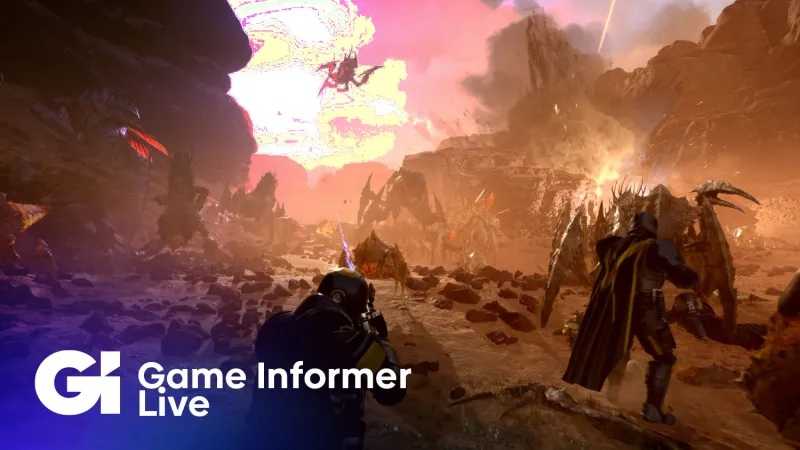
Alien bugs, killer robots, and more threaten the infallible democracy of Super Earth – it’s up to us to defend her! Join Marcus Stewart, Kyle Hilliard, and (eventually) Alex Van Aken as they squad up in Helldivers 2. Their freedom-fueled campaign result is a tumultuous, bamboozling, action-packed, and, ultimately, hilarious romp. For more on Helldivers 2, be sure to check out our glowing review.
[embedded content]
To watch more of our livestreams, video podcasts, and series such as Super Replay, be sure to visit and subscribe to our second YouTube channel, Game Informer Shows. Head over to our flagship Game Informer YouTube channel for more previews, reviews, and discussions of new and upcoming games.
